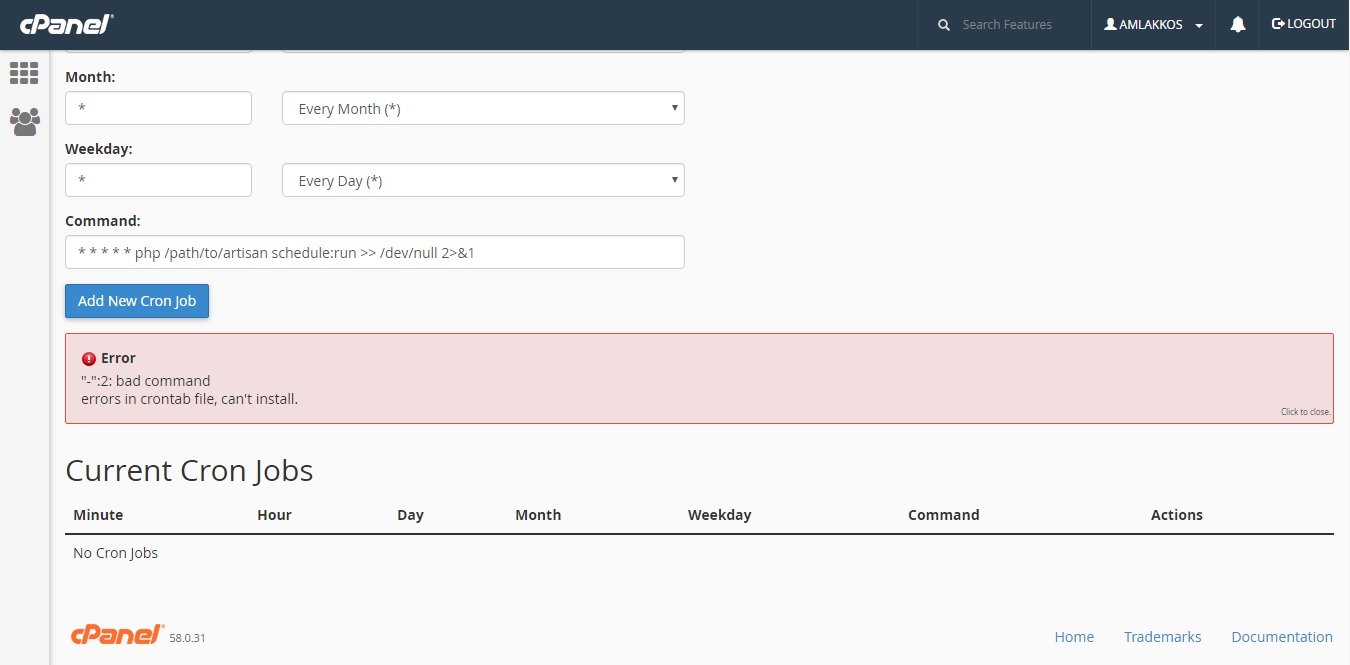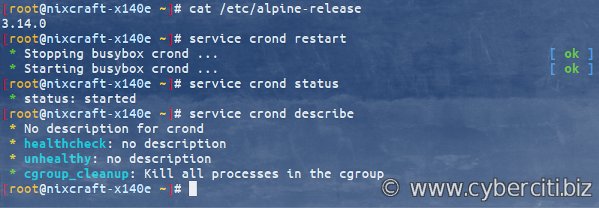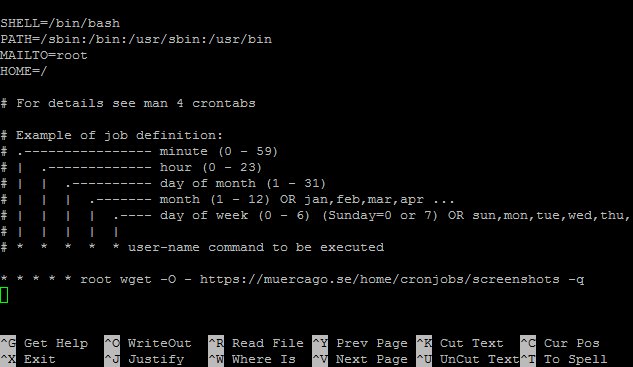Are you struggling to understand and effectively use cronjob syntax? Look no further! This blog article will provide you with a simple and conversational introduction to cronjob syntax, helping you unlock its potential and streamline your tasks. Let’s dive right in and discover the power of cronjob syntax together.
Cronjob Syntax
Cronjobs are an essential tool for scheduling and automating tasks on Unix-like operating systems. With the right syntax, you can set up a cronjob to run specific commands or scripts at predetermined intervals. In this article, we will delve into the details of cronjob syntax, discussing the various components and options available to configure your cronjobs effectively.
Understanding Cronjob Timing
Cronjobs rely on a timing structure that consists of five fields: minute, hour, day of the month, month, and day of the week. Let’s break down each field to understand how the timing works:
- Minute (0-59): Specifies the minute of the hour when the cronjob will run. For example, if you set it to 30, the cronjob will execute every hour at the 30th minute.
- Hour (0-23): Defines the hour of the day when the cronjob will run. If you set it to 2, the cronjob will execute every day at 2:00 AM.
- Day of the Month (1-31): Determines the specific day of the month when the cronjob will run. For example, if you set it to 15, the cronjob will execute on the 15th day of every month.
- Month (1-12): Specifies the month when the cronjob will run. If you set it to 6, the cronjob will execute every June.
- Day of the Week (0-6, where Sunday is 0): Determines the day of the week when the cronjob will run. For example, if you set it to 4, the cronjob will execute every Thursday.
By combining these fields, you can create a wide range of timing patterns to fit your specific needs. For example, setting the minute field to 0, the hour field to 12, and the day of the week field to 1 will schedule a cronjob to run every Monday at 12:00 PM.
Using Asterisks for Wildcards
Cronjob syntax allows the use of asterisks (*) as wildcards, enabling you to specify all possible values for a particular field. Here’s how you can utilize wildcards effectively:
- Minute: If you want the cronjob to run every minute, set the minute field to *
- Hour: Set the hour field to * if you want the cronjob to run every hour.
- Day of the Month: By setting the day of the month field to *, the cronjob will run every day.
- Month: If you want the cronjob to execute every month, set the month field to *.
- Day of the Week: Setting the day of the week field to * will schedule the cronjob to run every day of the week.
Using wildcards can be particularly useful when you want to create cronjobs that run at frequent intervals or throughout the entire day.
Specifying Ranges and Lists
In addition to wildcards, you can specify ranges and lists of values within a cronjob syntax. This allows for more fine-grained control over the timing of your cronjobs. Let’s explore how you can leverage ranges and lists:
- Ranges: To specify a range of values for a field, use the hyphen (-) symbol. For example, if you set the hour field to 9-17, the cronjob will run every hour between 9 AM and 5 PM.
- Lists: Lists are created by separating values with commas. If you set the hour field to 9,12,15, the cronjob will run at 9 AM, 12 PM, and 3 PM.
Combining ranges and lists provides even more flexibility when defining the timing patterns for your cronjobs.
Using Step Values
Step values allow you to increment the timing fields by a specific interval. This feature is beneficial when you need to run a cronjob at fixed intervals within a range. Here’s how you can utilize step values:
- Range with Step: To set a range with a step value, use the slash (/) symbol. For example, if you set the minute field to 0-59/15, the cronjob will run every 15 minutes.
- List with Step: When using a list of values, you can also apply a step value. For instance, setting the hour field to 0,6,12,18/3 will execute the cronjob every 3 hours, starting from 12 AM.
Step values offer precise control over the frequency of cronjob execution, ensuring your tasks are scheduled exactly as needed.
Common Cronjob Examples
To further illustrate the practical use of cronjob syntax, let’s explore some common examples:
Running a Script Every Day at a Specific Time
If you have a script that needs to run every day at a specific time, such as a daily backup, you can use the following cronjob syntax:
* 2 * * * /path/to/script.sh
This example will execute the script at 2:00 AM every day. Replace “/path/to/script.sh” with the actual path to your script.
Running a Job Every Hour
To run a job every hour, you can leverage the cronjob syntax as follows:
0 * * * * /path/to/job.sh
This cronjob will execute the job on the hour, every hour. Replace “/path/to/job.sh” with the actual path to your job script.
Running a Job at a Specific Interval
If you need to run a job at a specific interval, for example, every 15 minutes, you can use the following cronjob syntax:
*/15 * * * * /path/to/job.sh
This example will execute the job every 15 minutes. Replace “/path/to/job.sh” with the actual path to your job script.
Mastering cronjob syntax is key to effectively scheduling and automating tasks on Unix-like systems. Understanding how to configure the timing fields, utilize wildcards, specify ranges and lists, and incorporate step values gives you the flexibility to tailor your cronjobs to meet your specific requirements. By harnessing the power of cronjobs, you can streamline your workflow and ensure timely execution of critical tasks.
Linux Crash Course – Scheduling Tasks with Cron
Frequently Asked Questions
What is the syntax for a cronjob?
A cronjob follows a specific syntax consisting of five fields separated by spaces: minute, hour, day of the month, month, and day of the week. It is represented as:
* * * * *Each field can be defined with a specific value, a range of values, or a wildcard character (*) to indicate any value. For example, “0 * * * *” means the cronjob will run at the beginning of every hour.
Can I specify multiple values within a field in cronjob syntax?
Yes, you can specify multiple values within a field by separating them with commas. For example, “15,30,45 * * * *” means the cronjob will run at the 15th, 30th, and 45th minute of every hour.
How can I specify a range of values in a field?
To specify a range of values within a field, you can use a hyphen (-) between the starting and ending values. For example, “0 9-17 * * 1-5” means the cronjob will run on weekdays (Monday to Friday) between 9 AM and 5 PM.
What if I want to run a cronjob at a specific time only?
To run a cronjob at a specific time, you need to specify the exact value for the respective field and use an asterisk (*) for the other fields. For example, “0 0 * * 1” means the cronjob will run every Monday at midnight.
Can I execute a cronjob every X minutes/hours/days?
Yes, you can specify the interval for a cronjob using the forward slash (/) followed by a number. For example, “*/15 * * * *” means the cronjob will run every 15 minutes.
What if I want to redirect the cronjob output to a file?
You can redirect the output of a cronjob by appending the desired file path to the end of the command. For example, “0 * * * * /path/to/command > /path/to/output.log” will redirect the output to the specified file, allowing you to review it later.
Final Thoughts
Cronjob syntax is the key to effectively scheduling and automating tasks on a Unix-like system. With its simple yet powerful structure, understanding how to write cronjob syntax is essential for any system administrator or developer. By following a specific format that includes timing expressions and command execution, users can easily set up and manage recurring tasks. Remember to include the necessary details such as minute, hour, day, month, and day of the week, while also considering any specific requirements or dependencies. Mastering cronjob syntax allows for efficient task execution and helps streamline the management of automated processes.




